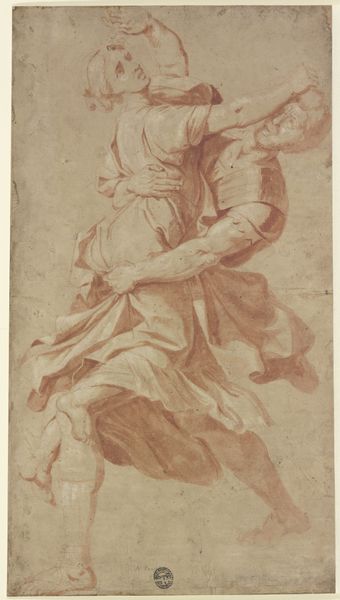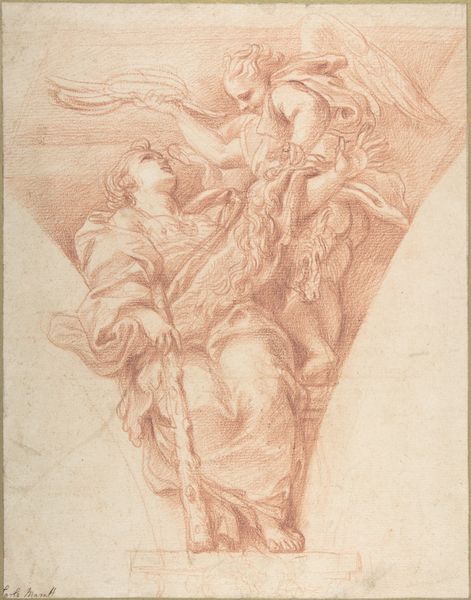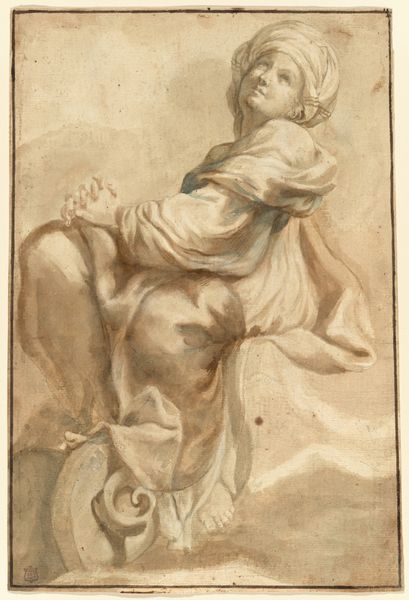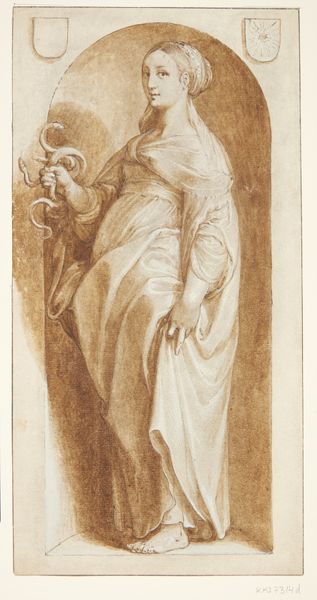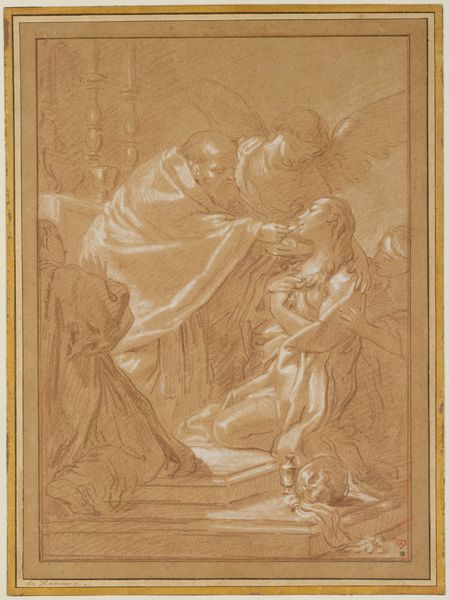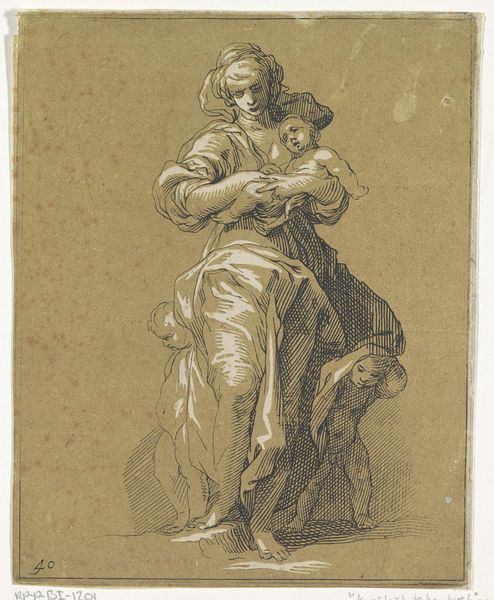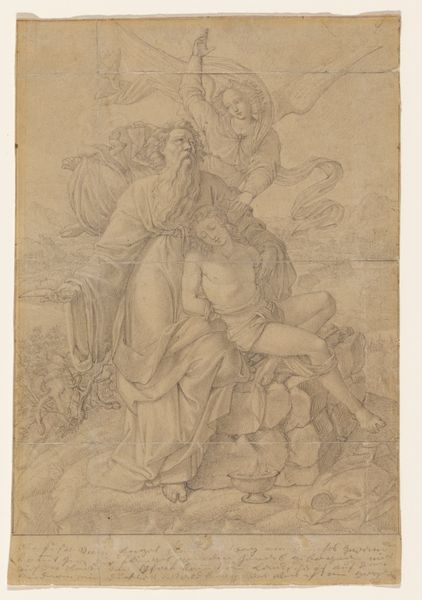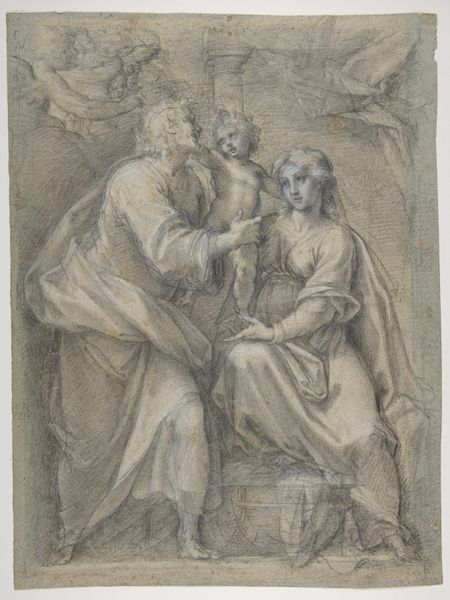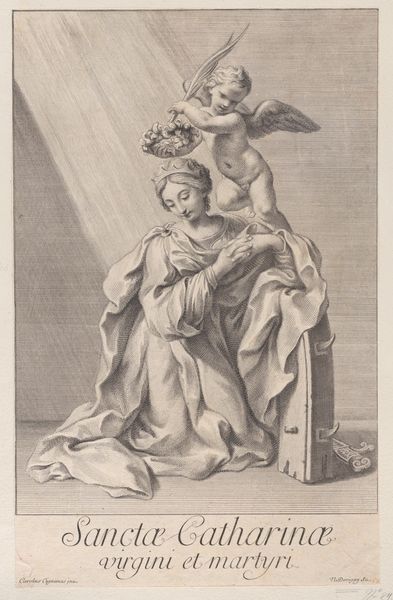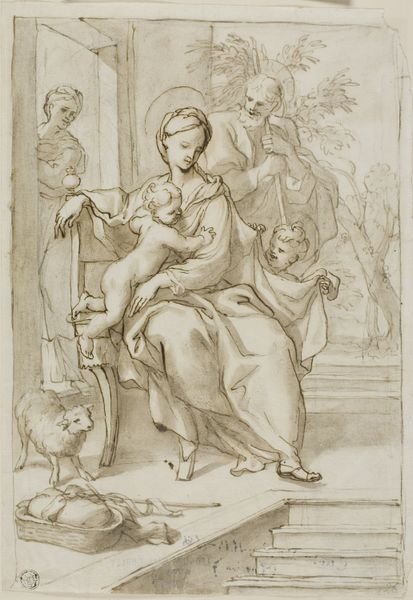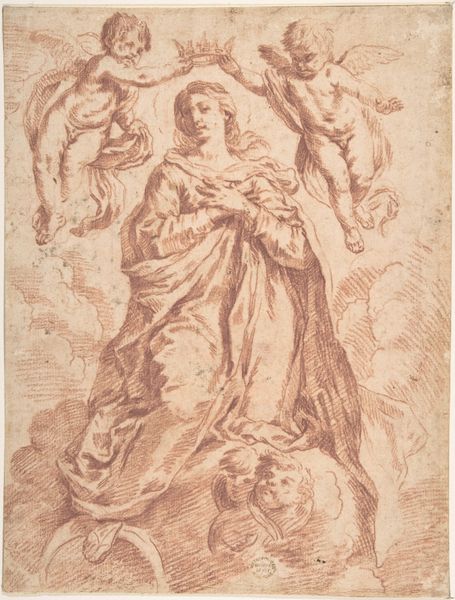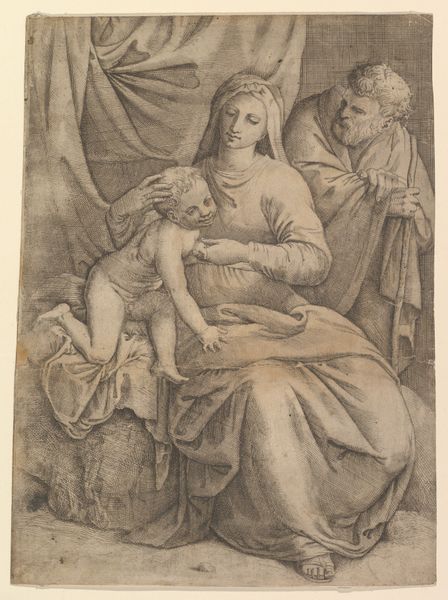
Madonna and Child with Saint Anthony of Padua n.d.
0:00
0:00
drawing, print, paper, ink, pencil, chalk, charcoal, black-chalk
#
portrait
#
drawing
#
narrative-art
#
baroque
# print
#
charcoal drawing
#
figuration
#
paper
#
oil painting
#
ink
#
pencil
#
chalk
#
portrait drawing
#
charcoal
#
black-chalk
Dimensions: 292 × 187 mm
Copyright: Public Domain
Editor: Here we have Giovanni Battista Pittoni’s "Madonna and Child with Saint Anthony of Padua." It’s a chalk and charcoal drawing on paper. The sepia tones create a really soft, devotional atmosphere, and there's a palpable contrast in textures between the robes and the soft skin. How would you interpret Pittoni's choices in rendering this image? Curator: I focus on the materiality. Pittoni's selection of chalk and charcoal is fascinating because those are materials that were easily accessible at that time, connecting artistic creation directly to broader patterns of resource availability. Also, note how Pittoni deliberately leaves some areas unfinished. It invites a look behind the scenes and shows us labor that's often erased. Considering the image as a product of its means of production demystifies "high art". What labor conditions were associated with chalk mining and charcoal production in Pittoni’s era? Editor: That's not something I had considered! How accessible and widely available these materials were really does bring the "divine" down to earth. But the technique seems refined, skillful… does that elevate the subject matter again? Curator: It's a push and pull. While skill is involved, viewing art as pure craftsmanship keeps the focus on the "how" not the "what". This challenges our received idea of “Baroque art”. Pittoni doesn’t only tell a biblical story, he tells a material story. And it implicates the viewer – even today. Editor: So it's not just about the religious scene depicted, but the materials that brought it to life, and the social conditions attached to them. I see it now: this image isn’t merely a window into a spiritual event; it’s a window into the economics of artmaking! Curator: Exactly. By foregrounding Pittoni’s selection of chalk and charcoal, and by considering the artistic production process in light of labour history, one better grasps how a religious subject acquires new meaning by understanding its construction.
Comments
No comments
Be the first to comment and join the conversation on the ultimate creative platform.
